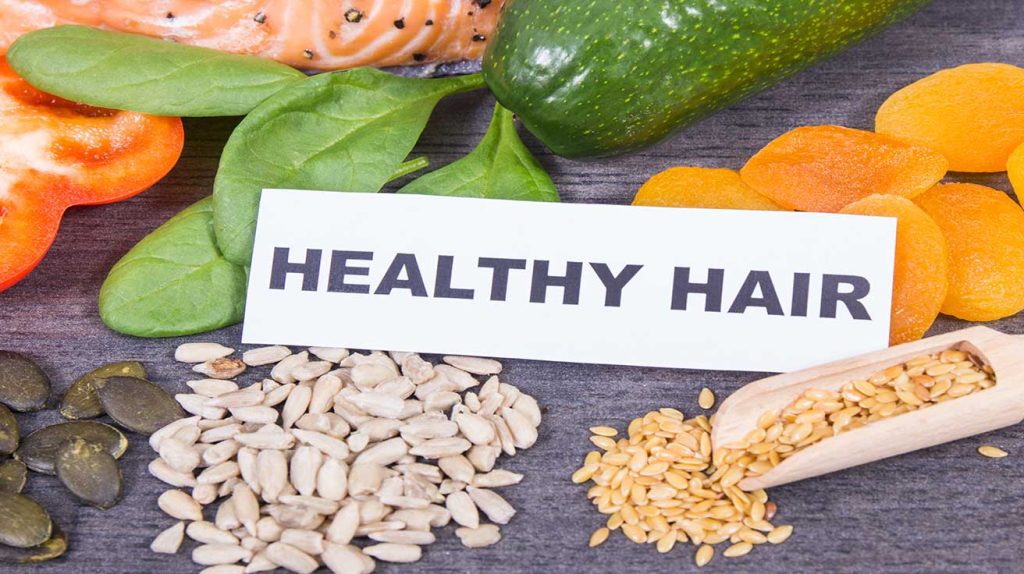
Which nutrients to prioritize after a hair transplant ?
Say goodbye to hair loss! You’ve made your decision and are considering undergoing a hair transplant in Turkey. To ensure the successful implantation of hair follicle grafts, the key lies in absorbing the right nutrients through a balanced diet. Discover the vitamins, minerals, and macronutrients to prioritize after a hair transplant to promote hair growth without complications.
Vitamins
Essential workers for the proper functioning and maintenance of the human body, vitamins play a role in numerous biological functions. They contribute to the growth and preservation of bones, teeth, and tissues. They strengthen the immune, nervous, and muscular systems. Additionally, they support the transformation of macronutrients to supply the daily energy needed by the body and help prevent aging-related diseases, cancer, and cardiovascular issues.
After a hair transplant, their role is vital in reducing inflammation and ensuring the healing of the scalp, as well as the growth of the hair follicle grafts.
Vitamins are divided into two categories: water-soluble (B-group vitamins and vitamin C) and fat-soluble (vitamins A, D, E, and K).
Which ones should you prioritize for optimal hair regrowth? Let’s delve into the topic right away.
Vitamin A
Vitamin A’s role is to maintain the integrity and growth of our cells. It supports the renewal of skin and intestinal mucosa tissues, regulates the immune system, and ensures good vision. Moreover, it plays a part in iron metabolism and promotes the health of nails and hair.
Vitamin A is derived from retinol (preformed vitamin A) and beta-carotene (provitamin A). In fact, a daily intake of vitamin A after a hair transplant offers numerous benefits. Retinol has an exfoliating effect on the scalp, removing dead skin cells. This promotes cell renewal, which encourages the growth of new hair. Additionally, retinol stimulates sebum secretion, a lipid film that helps maintain scalp hydration.
How can you include vitamin A in your diet? By incorporating dairy products, eggs, and orange, yellow, or dark green vegetables and fruits, which are rich in beta-carotene. Retinol is also abundantly found in cod liver oil and organ meats.
Vitamin B
Within the “vitamin B” family, your focus should be on two key vitamins: B8 and B9, essential for hair growth after a hair transplant.
Vitamin B8
Commonly known as biotin, vitamin B8 supports the nervous system and aids in metabolizing food to provide energy for the body. It also helps maintain the health of hair, skin, and mucous membranes.
Biotin plays a key role in synthesizing proteins, including keratin, which makes up more than 90% of the hair fiber. Its action smooths the hair cuticle scales and protects hair from external damage, giving it the strength it needs to regrow.
To boost your biotin intake, prioritize nuts and seeds, especially sunflower seeds. Add legumes like lentils or beans to your menu for both protein and biotin. Lastly, include veal, pork, or beef liver in your diet.
Vitamin B9
Known as folate or folic acid, vitamin B9 is crucial for red blood cell production and nervous system function.
What is the impact of folic acid after a hair transplant? Its beneficial action targets hair follicles, actively contributing to their cell renewal. As a result, grafts develop harmoniously, growth is enhanced, and the scalp is strengthened.
Among foods rich in folate, veal liver is the top source. Just 100 g provides the daily recommended intake (DRI) for adults of 400 µg. Royal jelly and walnuts are also excellent, as 100 g of either covers 50% of the DRI. Additionally, spider crab, spinach, avocado, broccoli, artichoke, radishes, strawberries, and mangoes are fantastic sources of vitamin B9.
Foods Rich in Vitamin C
An antioxidant vitamin that combats free radicals generated by the stress of surgery, vitamin C is indispensable after a hair transplant. By stimulating collagen production, it contributes to better scalp healing.
Foods with high vitamin C content include citrus fruits like oranges, clementines, mandarins, grapefruits, and lemons, which provide 45–49 mg per 100 g, or about 50% of the DRI. However, they are surpassed by blackcurrants, guavas, and kiwis. Among vegetables, green vegetables lead the way, such as kale, Brussels sprouts, and broccoli. As for tubers, sweet potatoes are a great choice.
Vitamin D
Vitamin D comes in two forms:
- Vitamin D2, derived from plant-based foods;
- Vitamin D3, synthesized by the body when exposed to UVB rays from sunlight and found in animal-based foods.
Vitamin D plays a critical role in stimulating the growth of hair follicle grafts during the anagen phase and improves their survival rate.
Just fifteen minutes of sun exposure is enough for the body to produce vitamin D3. However, direct exposure to sunlight is not recommended during the four to six weeks following a hair transplant. During this period, consider taking supplements or consuming foods rich in vitamin D.
The recommended daily intake is 3.1 µg for an adult. Prioritize:
- fatty fish (salmon, sardines, mackerel);
- chanterelle and porcini mushrooms;
- veal liver and cod liver;
- egg yolk (raw or cooked).
Vitamin E
Known for its antioxidant properties, vitamin E stimulates scalp health and reduces the deterioration of hair fibers. It also promotes blood circulation, which enhances the growth of hair follicles after a transplant.
Foods rich in vitamin E include vegetable oils; one tablespoon (15 g) of sunflower oil covers 80% of the recommended daily intake, which is 10 mg for men and 9 mg for women. Nuts, particularly hazelnuts, are also a good source of vitamin E. Finally, snack on sunflower seeds and consider supplementing with spirulina.
Minerals
The mineral family is divided into two categories: mineral salts and trace elements. Obtained through diet, they fulfill numerous functions, including:
- bone formation;
- energy metabolism;
- collagen production;
- water balance regulation;
- cell and tissue repair;
- immune system stimulation.
After a hair transplant, trace elements such as zinc, iron, and selenium are particularly important.
Zinc
A zinc deficiency could hinder the development of hair follicle grafts, tissue regeneration, and healing. Therefore, it’s essential to supplement with zinc or consume zinc-rich foods.
Oyster enthusiasts will be pleased, as oysters provide the best source of zinc. Additionally, 100 g of grilled beef covers 50% of the recommended daily intake. Among cheeses, blue-veined varieties are particularly high in zinc.
Iron
Iron plays a fundamental role in oxygen transport and recycling by red blood cells. Iron intake after a hair transplant helps to support the development of implanted grafts. Adequate blood oxygenation actively contributes to hair follicle growth.
If you are vegetarian, supplementation is recommended as non-heme iron from plants may not meet the recommended daily intake. For non-vegetarians, red meat, black pudding, poultry liver, clams, and eggs are excellent sources of iron.
Selenium
A powerful antioxidant trace element, selenium is an ally in boosting keratin production. This structural protein supports the growth of hair follicle grafts. Selenium’s antioxidant properties also act as a shield against free radicals, protecting cells from oxidative stress that could cause damage.
After a hair transplant, it’s recommended to consume Brazil nuts, raw or cooked tuna, oysters, veal liver, or cod liver.
Macronutrients
Represented by the trio of proteins, carbohydrates, and fats, macronutrients come from our diet to support vital functions by providing caloric energy. For a successful hair transplant, it’s important to maintain an adequate intake of proteins and polyunsaturated fatty acids, such as omega-3s.
Proteins
Proteins support the development and maintenance of muscles, the structure and health of hair, nails, skin, and bones. They also aid in the production of hormones, antibodies, hemoglobin, and digestive enzymes.
Ensuring protein intake after a hair transplant helps to optimize graft implantation and regrowth, resulting in strong, healthy hair.
Protein sources include red meat, legumes, fish, eggs, cheese, nuts, and seeds.
Omega-3s
Essential for proper brain and nervous system function, omega-3s also contribute to scalp hydration, hair strengthening, and growth.
The best sources of omega-3s are found in vegetable oils, nuts, and fatty fish.
Key Takeaways
Adopting a diet rich in vitamins, minerals, and proteins, combined with medical follow-up, promotes healing, reduces the risk of infection, strengthens hair follicles, and accelerates hair growth. During the postoperative phase, which lasts two to three weeks, it’s best to avoid alcohol, caffeine, spicy foods, and tobacco.
Patience is key to seeing the results of your hair transplant, as post-transplant evolution occurs in several stages. Grafts start growing around the third month. Hair becomes visible after six months, with full and lasting regrowth achieved by the end of one year.
Are you ready to say goodbye to hair loss and reclaim your former head of hair?

Dr. Levent Acar - Docteur